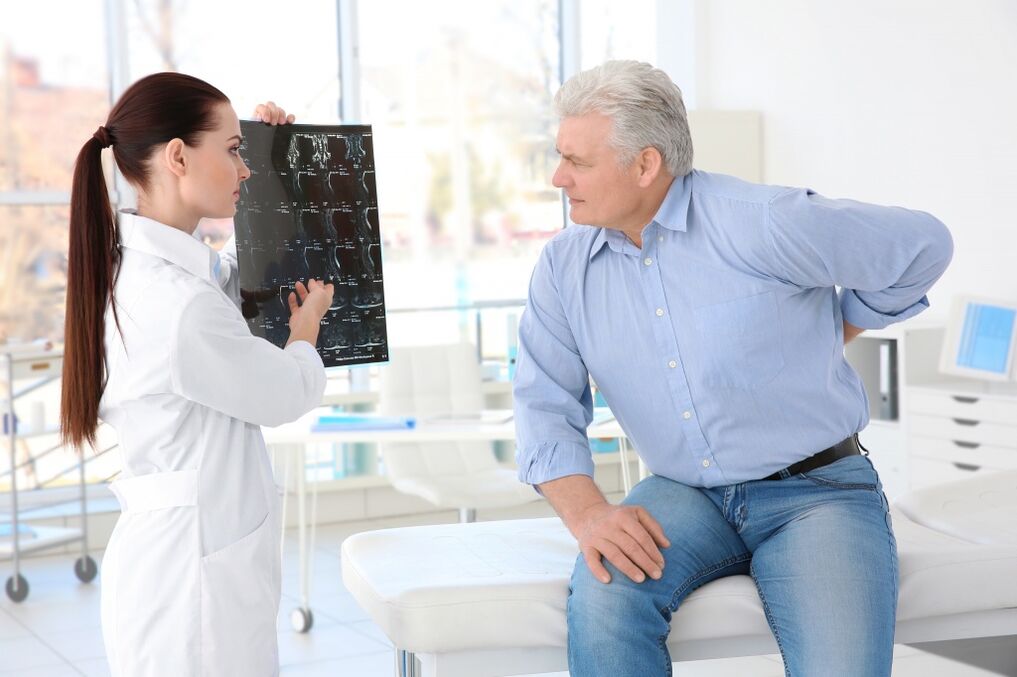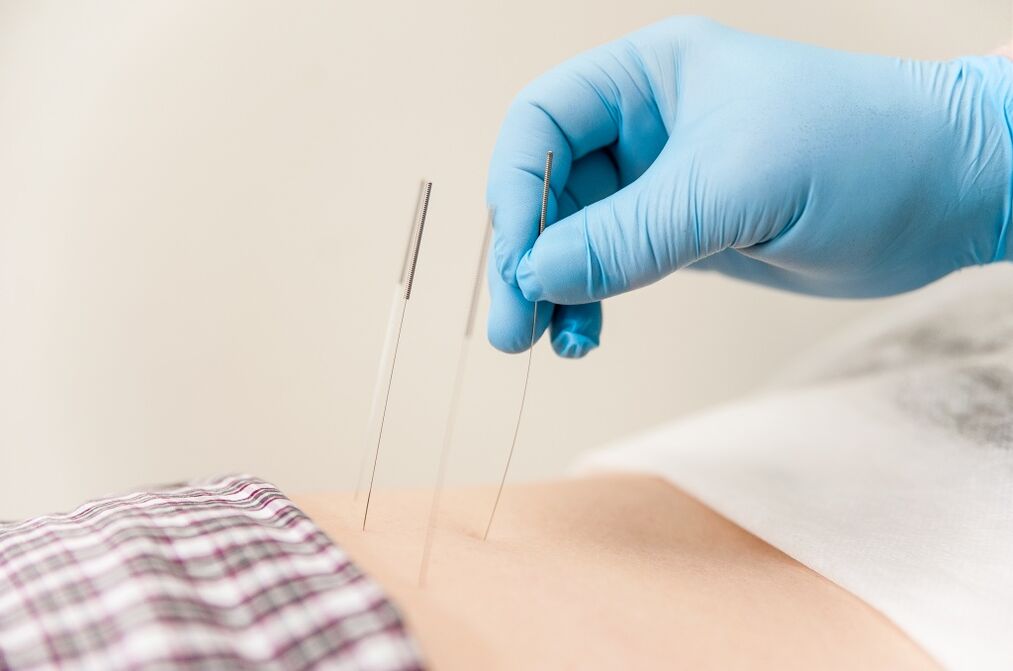Osteochondrosis is called the dissafheco's disease of the cartilage tissue of the intervertebral joints, leading to their destruction.The localization of osteochondrosis in the spinal vertebrae of the thoracic is called thoracic osteochondrosis.Compared to osteochondrosis of the other localization - cervical chest osteochondrosis is less diagnosed with anatomical characteristics of the chest structure.It is a relatively static structure in which the mobility of the spine itself is relatively small - respectively, even with an active pathological process in the intervertebral discs, the probability of their damage is minimal.In the last past, when diagnostic skills were limited, thoracic osteochondrosis was considered prerogative of exclusively elderly patients.It has now been identified not only among young people but also in childhood.

Why is chest osteochondrosis developing?
Among the causes of thoracic osteochondrosis, should be distinguished below:
- Pathology of vertebrae and intervertebral discs - both hereditary and acquired as a result of various factors;
- violations of blood supply to the spinal column;
- Excessive or irrational physical activity in the back (when playing sports or due to difficult physical work);
- Violations of mineral metabolism in the body, lack of some trace elements;
- Sedentary lifestyle, sitting professional activity;
- The weakness of the posterior muscles, which resulted in improper behavior and irrational distribution of load on the back;
- Injuries.
In addition, there are a number of factors that can provoke a worsening of the disease in its chronic course:
- damage;
- stress, excess nerve tension;
- Hypothermia of the body - both general and local hypothermia of the back muscles;
- Excessive physical work.
Why is the thoracic osteochondrosis dangerous?
The osteochondrosis of the spine of the chest is a disease, accompanied by significant pathological changes in the vertebrae and intervertebral joints.Therefore, the first consequence of such a disease is the destruction of the structures that form the spine.The result of this can be scoliosis, respiratory system pathology (pneumonia, pneumosclerosis), damaged blood circulation of the internal organs, diseases of the upper gastrointestinal tract (pancreatitis, cholecystitis).The negative consequences of thoracic osteochondrosis can also apply to the learning system.Continuous pain syndrome, characteristic of osteochondrosis, reduces the quality of life and can "mask" for other diseases, which causes diagnosis and improper treatment.
How is the chest osteochondrosis manifested?
With thoracic osteochondrosis, the symptoms are quite characteristic:
- pain - occurs when a person is in a position for a long time, as well as with movement, weight lifting, physical exercise.The constant dull pain in the shoulder blade area is characteristic, as well as the pain when trying to raise your hands;
- Intercostal neuralgia;
- Feeling in the chest, as a result of which deep breathing becomes difficult;
- Decreased sensitivity certain areas of the skin;
- Paresthesia - a feeling of "dumping of eggs" in the skin, burns, tingling;
- lowering the temperature certain areas on the skin;
- lowering the temperature Foot of the foot, Itching flammable in them;
- Disordishes digestive disorders.
Two basic types of pain associated with osteochondrosis of the spine of the chest: dorsalgiyu (prolonged pain in the affected intervertebral cartilage area) and dorsago (intense paroxysmal pain associated with muscle spasm and difficulty breathing) are distinguished.
The so -called so -called osteochondrosis is characteristic of osteochondrosis Gastro syndrome - Pain in epigastria, not related to meals, day or year time.
The degree of thoracic osteochondrosis
In clinical practice, 4 degrees of osteochondrosis of the spine of the chest are distinguished, depending on the degree of cartilage damage and inclusion in the pathological process of the surrounding structures.
Thoracic osteochondrosis of the spine of scale 1: Disks between vertebrae lose their elasticity, somewhat diluted, local extensions - extensions can appear in fibrous rings of the disc.
Thoracic osteochondrosis of the 2nd degree: The intervertebral discusses progress, the spine of the chest loses stability.At this stage, the pain begins to disturb, often neurological symptoms join it: paresthesia, numbness of the skin.Acques can appear on the fibrous ring of the intervertebral disc.
Thoracic osteochondrosis of the spine of 3 degrees corresponds to the formation of intervertebral hernia.
Thoracic osteochondrosis 4 degrees It is characterized by a complete loss between the vertebral disc of its depreciation properties.The vertebrae lap becomes critical, the bone tissue begins to collapse.In the spinal canals, blood vessels and nerves are violated, which leads to persistent neurological symptoms, intense bolevomu syndrome, circulatory disorders.
Diagnosis of thoracic osteochondrosis
The diagnosis of "thoracic osteochondrosis" is made on the basis of a patient study, examination and examination: radiography and image of magnetic resonance.An X -ray study helps create the localization of the spine lesion, and the image of magnetic resonance is to clarify the diagnosis, to exclude the presence of benign and malignant neoplasms.
A number of symptoms of spinal osteochondrosis are not specific - the same signs may indicate other diseases.This explains very frequent errors in diagnosis, when the patient, for example, is treated for a long time for pancreatitis due to pain, whose true cause is breast osteochondrosis.Therefore, comprehensive diagnosis, withdrawal of adjacent specialists - gastroenterologists, pulmonologists - for additional patient examination are very important.
Chest Osteochondrosis: Treatment

Given the fact that the restoration of the destroyed cartilage is impossible, the effective treatment of breast osteochondrosis is only possible in the early stages of the disease, until the cartilage has still lost its structure.Therefore, it is especially important to consult a doctor in a timely manner - when the first manifestations of pathology, discomfort in the spine, insignificant pain, numbness of the skin or its burning sensation appear.
In the early stages of the disease, treatment comes down to obtain non -carcotic analgesics, allowing non -steroidal anti -inflammatory pain and medicines that reduce the intensity of the inflammatory process in the tissue and also eliminate pain.However, the main emphasis on the treatment of the initial phase of osteochondrosis of the spine is made to obtain hondroprotectorov.This is the name of a group of medicines that aim to restore normal metabolism to cartilage tissue, which result in an improvement in cartilage trophism and a slowdown in its destruction.
With the progress of the pathological process of non -steroidal anti -inflammatory agents to relieve inflammation, as a rule, it becomes sufficient, which forces the doctor to supplement cortico glucose with steroid drugs.Moreover, diuretics can be added to the list of medicines that allow the elimination of swelling at the roots of the spinal nerves violated and thereby relieve the appropriate neurological symptoms and pain.The inclusion of antispasmodic drugs in therapy allows to eliminate muscle spasm, which accompanies the osteochondrosis of the spine of the chest.
With the development of intervertebral hernia and the destruction of bone tissue of the vertebrae, conservative treatment loses its effectiveness, the only reasonable alternative is the surgical treatment of osteochondrosis.
Physiotherapy for breast osteochondrosis
Out of periods of irritation, physiotherapy brings good results.Effective methods in thoracic region osteochondrosis include:
- Laser therapy;
- magnetotherapy;
- Extension - both dry and wet;
- vacuum therapy;
- acupuncture;
- Pharmacopuncture.
Moreover, massage and manual therapy include popular and effective physiotherapeutic methods for breast osteochondrosis.Preventive massage courses for patients with thoracic region osteochondrosis should suffer at least twice a year.At the same time, any manipulation should be as frugal, exclusively out of periods of irritation, so as not to provoke a deterioration of the pathological process.

Physical Media Education on Osteochondrosis of the Chest
An important component of complex treatment of thoracic spinal osteochondrosis is physical therapeutic education (exercise therapy). The task of the exercises is to restore the movement of the intervertebral joints, eliminate muscle spasms, eliminate stiffness in the back.LFK allows you to strengthen your muscle crust as well as increase the physical mobility of the patient as a whole, which is an important factor in stimulating blood circulation, restoration of pulmonary ventilation.
Before performing a complex of special exercises, you must perform a small general heat, aiming at heating the muscles or taking a warm shower.High quality heating before classes avoids damage.All movements should be smooth, it is necessary to avoid sharp tendencies and curves that can exacerbate spinal cord damage.
The osteochondrosis of the spine of the thoracic is a chronic disease that significantly reduces the quality of life of the patient, dangerous from his complications.Timely address to the doctor and the competent complex treatment, started with the first signs of the disease, will help stop the pathological process and eliminate unpleasant symptoms.



































